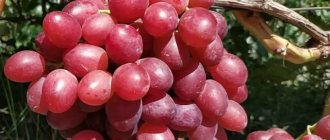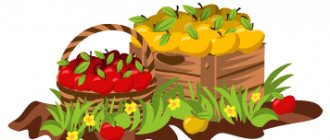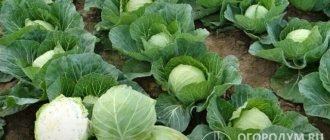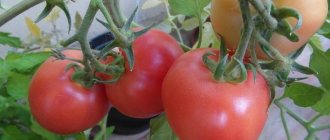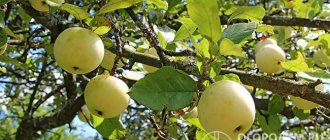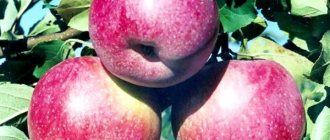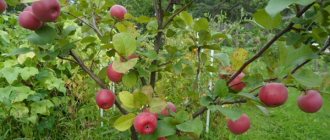The apple tree variety, a gift for gardeners, is one of the most popular, as it is characterized by stable yields in regions with risky farming. Fruits of this species are characterized by high taste and can be stored for a long time if certain conditions are met. The name of the variety fully meets the expectations of gardeners, since to get a good harvest of apples you just need to follow the general rules of care.
“Gift for Gardeners” - a universal variety
History of selection
The “Gift for Gardeners” was received in 1959. Employees of the Siberian Institute of Horticulture named after. M.A. Lisavenko. The goal of the breeding work was to create a resistant variety that would consistently produce fruit under temperature changes and short summer conditions. And the resulting variety fully met all expectations.
The basis for the “Gift for Gardeners” apple tree was such species as “Melba” and “Laletino”. The variety standard was officially recognized in 1998 and entered into the State Register. It is recommended for cultivation throughout the Western Siberian region.
Description of the apple tree Gift for gardeners
This species has a number of characteristics that make it stand out from the rest. Therefore, when choosing a variety, you should pay attention to them, which will allow you to get a complete picture of the “Gift for Gardeners” apple tree.
Appearance of fruit and tree
The variety belongs to the category of medium-growing. The height of the tree does not exceed 3 m, and the diameter is 3.5 m. The crown of the “Gardeners’ Gift” is round and of medium density. Branches of moderate thickness. Mature shoots have a red-brown bark tint, while young shoots have a green color. There is pubescence on the surface of the branches.
The leaves of this variety are large, oblong-oval. Petioles of medium length. The plates have a greenish-gray tint and are pubescent on the reverse side. There are small serrations along the edges of the leaves.
Important! The growth of shoots per year in the “Gift for Gardeners” apple tree is 30-35 cm.
The apples are one-dimensional, small, the average weight is 70-80 g. The shape of the fruit is round, slightly flattened towards the center. The main color is greenish-yellow, the cover color is red, presented in the form of small streaks that reach half of the fruit.
The pulp of “Gift for Gardeners” is white, with a slight greenish tint, dense, slightly grained.
When fully ripe, apples are juicy and have a pleasant aroma.
Lifespan
The “Gift for Gardeners” apple tree bears fruit consistently until the age of fifteen, and then must be replaced. If all planting rules and agricultural practices are followed, the lifespan can be extended by another 5 years, and if the recommendations are ignored, it can be significantly reduced.
Taste
Apples “Gift for Gardeners” have a pleasant sweetish taste with a slight sourness. The tasting rating of the variety is 4.5-4.8 points out of 5 possible. The fruits contain tannins, ascorbic acid, and P-active components. But at the same time they have an insignificant concentration of pectins and titratable acids.
Important! The sugar content of “Gift for Gardeners” apples reaches 13.3%, which is an order of magnitude higher than that of other types.
Apples of this variety are ideal for drying and making compotes, jam and jam.
Growing regions
The “Gift for Gardeners” apple tree is grown everywhere in the Altai Territory and Siberia. But the variety also shows high productivity in the central regions. But in the southern regions it is not recommended to grow it, since the apple tree does not tolerate dry air and lack of moisture. In such conditions, it is almost impossible to achieve even an average level of yield.
Productivity
The first fruiting of the “Gift for Gardeners” apple tree occurs 3-4 years after planting, and occurs every season thereafter. The average yield of a ten-year-old tree is 20.5 kg, and by 15 years - 30 kg.
Frost resistance
The frost resistance of the “Gift for Gardeners” variety is average. When the temperature drops to -40 degrees, the bark may freeze and cracks may appear. But the peculiarity of this apple tree is that it has the ability to quickly regenerate.
Temperature changes and prolonged frosts do not significantly affect the yield of the variety
Resistance to diseases and pests
The “Gift for Gardeners” apple tree is immune to scab. But it exhibits average resistance to other common diseases. If the growing conditions are inappropriate, this variety may suffer from aphids and leaf rollers. Therefore, to prevent damage, it is necessary to treat the crown and trunk with fungicides and insecticides every spring.
Flowering period and ripening period
The apple tree “Gift for Gardeners” is one of the autumn species. It blooms in early June and lasts from 6 to 10 days, depending on the air temperature. Removable fruit maturity occurs in the second half of September. Therefore, harvesting can be carried out during this period and over the next 2 weeks.
Pollinators
The “Gift for Gardeners” variety is self-fertile. Therefore, it does not need other pollinating trees to produce apples.
Transportation and keeping quality
The fruits have a thin but dense peel, so they can easily be transported even over long distances. Also, apples of this variety are well stored for a long time without loss of commercial quality.
Care instructions
The main steps are the same as for growing other fruit trees. It is important not only to plant a tree, but also to provide it with proper care.
- In the autumn, sanitary pruning is carried out. All dried, damaged and broken branches are removed. It is carried out before the onset of severe frosts. In mature trees, 1/3 of the shoots are removed. Young people have very little.
- In spring, a crown is formed. Remove all branches growing inward, diseased, weak and dry. Pruning is done with pruning shears, and thicker ones with a saw. The tool must be disinfected, and the cut areas must be covered with garden varnish.
In the spring, feed the apple tree with ammonium nitrate. When the flowering period begins and before the fruits ripen, it will be necessary to fertilize with phosphorus fertilizers.
Read also: Columnar apple tree Vasyugan - description of the variety with photos, reviews
In the autumn months, after fruiting, feed with potassium and phosphorus. You can add organic fertilizers. They will strengthen the tree’s immunity before wintering.
- Young trees need to be watered frequently. Adults from spring to autumn. In particularly hot weather, it is necessary to moisten the soil in the circle around the trunk more often, since this variety does not like drought.
- It is especially important to water at the time of flowering and fruit set. For a young tree you need 4 - 5 buckets of water, for an adult - 8 - 10.
Advantages and disadvantages
This variety has advantages and disadvantages. Therefore, when choosing it, you should pay attention to them.
The “Gift for Gardeners” variety can be used as a basis for breeding new species
The main advantages of the variety:
- stable yield;
- presentation of apples;
- excellent taste;
- versatility of use;
- fruits can be stored and transported for a long time;
- quickly recovers when frozen;
- immune to scab and weather conditions;
- does not require pollinators.
Flaws:
- small apples;
- the tree cannot tolerate even short-term drought;
- average resistance to frost.
Disease and pest control
This apple variety is quite resistant to many diseases, but sometimes it is affected by fungi:
- scab (black-brown spots on leaves and fruits);
- powdery mildew (white, mold-like coating on leaves);
- bacterial burn (darkening and drying of leaves, sometimes bark);
- tinder fungus (growths on tree bark).
The fight against tinder fungi involves complete mechanical removal (cutting) of the fungus, disinfection of the cut site, and subsequent healing of the wound. The cut area is disinfected with a solution of copper sulfate, after which it is painted over with oil paint. If this is not done, the mushroom will soon grow again.
Apple trees are affected by scab or powdery mildew when the air and soil humidity are high. This often happens after prolonged rains, and if action is not taken in time, the disease can spread to the entire tree. The best remedy for these diseases are preventive measures:
- timely crown formation;
- adding ash and potash fertilizers to the soil;
- spraying with medicinal solutions (Bordeaux mixture, copper oxychloride).
Very often this variety is attacked by pests: various insects, caterpillars. The fight against them involves spraying with insecticides, but experienced gardeners recommend a universal and proven remedy for this - a urea solution at the rate of 6-8 liters per tree.
Landing
For planting, 2-year-old seedlings should be selected. Plants can be planted in a permanent place at the end of April or in the first ten days of September.
Important! A day before planting, the roots of the seedling need to be placed in water, which activates growth processes.
Algorithm for the procedure:
- Prepare a hole 80 cm deep and 70 wide.
- Place a layer of crushed stone 5 cm thick on the bottom.
- Fill 2/3 of the hole volume with a nutrient mixture of turf, humus, and leaf soil in a 2:1:1 ratio.
- Additionally, add 30 g of superphosphate and 15 g of potassium sulfide, mix everything thoroughly.
- Make a small elevation in the center of the hole.
- Place a seedling on it, straighten the roots.
- Place a support nearby.
- When planting, the root collar of an apple tree cannot be buried; it must be at soil level.
- Cover the roots with soil and compact the surface at the base.
- Water the seedling generously.
How to plant an apple tree on a plot
This unpretentious variety has high restorative abilities, but its planting should be done correctly.
Optimal timing
Young apple trees can be planted in the ground in early spring (March-April) or mid-autumn (October), depending on the climate zone and weather conditions.
Did you know? The story of “golden apples”, which grant those who get and eat them eternal youth, is found in the legends of almost all the peoples of Western Europe.
Typically, gardeners plant trees in the fall, because this gives the roots a lot of time to adapt and prepare for the growing season, and there is so much trouble in the spring. Only in places with dry and cold autumn is it recommended to plant trees in the spring.
Selection and preparation of a site
The choice of landing site plays a very important role. It is best to choose a sunny place without drafts, where trees have not grown before or the soil has already rested for a year or two after uprooting and has recovered.
If such a place cannot be found, then the soil in the planting hole completely changes. Groundwater should not lie closer than 1-1.5 meters, otherwise it will be necessary to make an embankment to prevent rotting of the roots.
If there are slopes in southern areas with warm winters and hot summers, you need to plant apple trees on the northern slope, and in northern areas with frosty winters and cool summers, choose the southern sides. Apple trees do not like rocky soil or soil with gravel; they prefer loam.
Important! According to the Charter of the Horticultural Society of Ukraine, medium-sized trees are planted two meters from the boundary, tall trees - three meters, shrubs - one meter. Planting holes can be pre-dug 1-4 weeks before purchasing seedlings, with the top layer thrown away from the bottom
Dig a hole about one meter wide and 60-80 cm deep
Planting holes can be pre-dug 1-4 weeks before purchasing seedlings, with the top layer thrown away from the bottom. Dig a hole about one meter wide and 60-80 cm deep.
The planting hole will supply the tree with nutrients for the coming years, so the fertile layer of top soil from the dug hole is mixed with humus, peat or compost, and manure.
For planting, it is recommended to prepare additives from ash and mineral fertilizers (superphosphate). If the site has clay soils, then the soil mixture is mixed with sand. For sandy ones, a moisture-retaining layer is formed from clay.
Process and scheme
The distance between the trunks of medium-sized trees should be from 3.5 to 4 meters. When there is only one apple tree in the garden, other trees or shrubs should grow no closer than three to four meters.
When planting in a hole, about a third of its depth is filled with prepared soil mixture with the addition of ash (250 ml) and 200-300 grams of superphosphate.
A seedling with a planting peg is carefully placed in the hole, the roots are carefully straightened and the soil mixture is filled up to the root collar.
Did you know? The Celts called heaven Avalon, which means "land of apples."
The seedling is tied to a prepared peg. Compact, form a circle around the trunk, water and make sure that the root collar rises 5-6 cm above the soil. The hole around the tree is mulched to about 5 cm with suitable material (humus, peat, straw, leaves, tops, etc.).
Growing and care
It is necessary to water the apple tree regularly, in the absence of seasonal rainfall - 2 times a week. Fertilizing is also important for this variety. They strengthen the plant’s immunity and increase its frost resistance. In the spring, the apple tree needs to be fertilized with urea or ammonium nitrate, and during budding and ovary formation, superphosphate and potassium sulfate should be used.
Pruning should also be carried out annually, which helps to give the crown the correct shape and clear it of thickening shoots. In addition, in early spring, the “Gift for Gardeners” apple tree should be sprayed with Bordeaux mixture, and additionally treated with the “Inta-Vir” insecticide.
Important! Preventive measures help protect the tree from pests and diseases.
Collection and storage
Apples “Gift for Gardeners” are suitable for long-term storage for 4 months. and more. To do this, you need to put the harvest in wooden boxes and cover it with straw so that the fruits do not come into contact with each other. Then you should place them in a cool room with good ventilation.
Important! Throughout the entire storage period, fruits must be periodically sorted and rotten ones removed in a timely manner.
Fruits should be picked from the tree at the stage of absolute ripeness.

